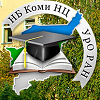Mineralogical and Biological Witnesses of Redikar Burial of the 10th–11th Centuries
Abstract
Keywords
Full Text:
PDF (Русский)References
Belavin A.M. 2007. Redikarskiy arkheologicheskiy kompleks (po materialam raskopok 1996 g.) [Redikar archeological complex (on materials of excavations in 1996)]. Trudy KAEE. 4:23-50. (in Russian)
Belavin A.M., Krylasova N.B. 2016. Problema periodizatsii srednevekovykh arkheologicheskikh kultur Permskogo Preduralya [Problem of dating of
the medieval archeological cultures of the Perm Cis-Urals]. Vestnik Permskogo universiteta. Istoriya. 1(32):28-41. (in Russian)
Narchuk E.P. 2003. Opredelitel semeystv dvukrylykh nasekomykh (Insecta: Diptera) fauny Rossii i sopredelnykh stran (s kratkim obzorom
semeystv mirovoy fauny) [Qualifier of dipterous insects family (Insecta: Diptera) of fauna of Russia and adjacent countries (with short review of world fauna families)]. Trudy Zool. in-ta RAN. T. 294, p. 250. (in
Russian)
Oborin V.A. 1953. Bayanovskiy mogilnik na r. Kosve [Bayanovskiy burial ground on the Kosva River]. UZPGU, T. IX, Vyp. 3. Kharkov. (in Russian)
Chaikovskiy I.I., Shirinkin P.S. 2016. Arkheomineralogiya izdeliy drevney tsvetnoy metallurgii Permskogo Prikamya: opyt ispolzovaniya elektronno-mikrozondovogo analiza [Arсhaeomineralogy of ancient nonferrous metallurgy pieces of the Perm Region: Experience of usage of electron microprobe analysis]. Vestnik Permskogo universiteta. Geologiya. 4(33):6-17. (in Russian) doi:10.17072/psu.geol.33.6
Grzywacz A., Hall MJR., Pape T., Szpila K. 2017. Muscidae (Diptera) of forensic importance an identification key to third instar larvae of the western Palaearctic region and a catalogue of the muscid carrion community. Int J Legal Med. doi: 10.1007/s00414-016-1495-0
Moon R.D., 2019. Muscid Flies. In: Medical and Veterinary Entomology. Eds. Gary R. Mullen, Lance A. Durden, pp. 345-368.
Cortinhas L.B., Mendonc P.M., Barbosa R.R., Carvalho Queiroz M.M., 2016. Ultrastructure of immature stages of the black dump fly: Ophyra aenescens (Wiedemann, 1830) (Diptera: Muscidae: Azeliinae). Acta Tropica 158:125–129.
Erzinclioglu Y.Z., 1989. The value of chorionic structure and size in the diagnosis of blowfly eggs. Med Vet Entomol 3: 281-285.
Greenberg B., Singh D., 1995. Species identification of calliphorid (Diptera) eggs. J Med Entomol 32: 21-26.
Cortinhas L.B., Mendonc P.M., Braga M.V., Carvalho Queiroz M.M., 2020. Ultrastructure of the Immature Stages of Musca domestica (Diptera:
Muscidae: Muscinae) Journal of Medical Entomology, XX(X):1–10.
Hydrotaea Robineau-Desvoidy, 2018. 1830 (Diptera: Muscidae) From Forensic and Archaeological Contexts Journal of Medical Entomology,
XX(X):1–10.
Teerink B.J. 1991 Hair of West European mammals. Atlas and identification key. Cambridge, N.Y.: Cambridge Univ. Press, p. 232.
DOI: http://dx.doi.org/10.17072/psu.geol.21.1.1
Refbacks
- There are currently no refbacks.















